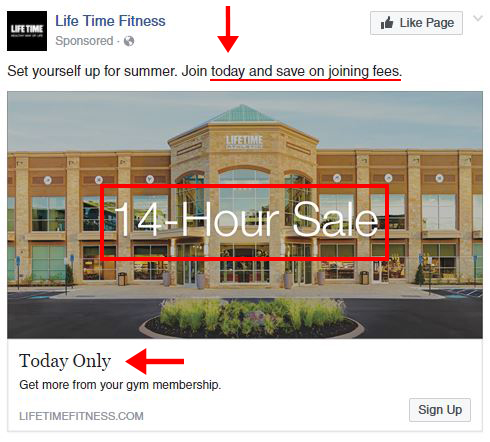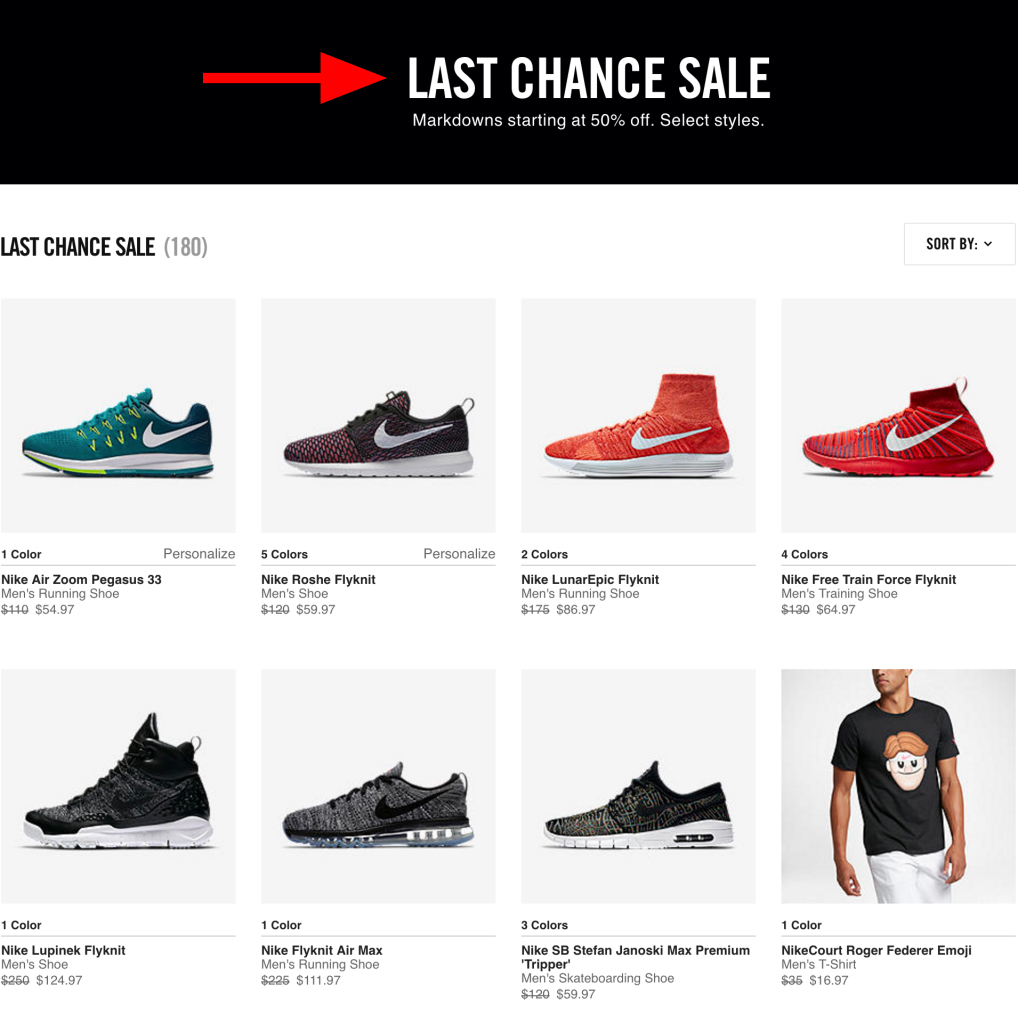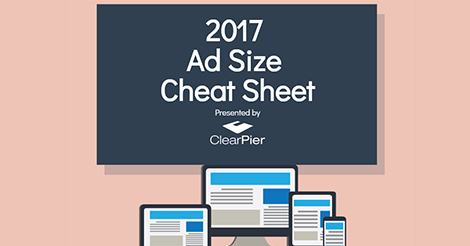How to Write Headlines that Actually Attract Attention
Headlines really matter if you want to attract those clicks and shares.
Copywriters know, whether it’s print or digital, that headlines are essential to your content’s success. The more people who read your catchy headline and have their interest piqued, the more likely they are to continue reading your content and even share it. In fact, David Ogilvy believed that headlines are worth 90% of advertising dollars.
So yeah, good headlines matter, a lot.
But writing awesome headlines that actually attract attention is a challenge even at the best of times for marketers and publishers. With that in mind, we’ve created an infographic that’s going to make your life easier – or at least, your headline writing life easier. Scroll down to learn the best practices now.

Want to learn more? Connect with our team at sales@clearpier.com
How to Use Urgency and Scarcity to Drive More Conversions
‘Hurry! Limited time offer! While supplies last!’
How do words like these turn browsers into buyers?
What makes people to buy?
It’s a question that both marketers and psychologists have been pondering for hundreds of years. There are a lot of reasons why we we buy. We buy because a product makes our lives easier, or because it’s superior than it’s competitors. We buy because it makes us feel good, look better, seem unique.
In other words, the Perceived Value of a product is what motivates people to buy. How can marketers create or enhance Value and get consumers to stop ‘just browsing’ and to start buying, now? We look to human behavioral psychology for answers.
What is Scarcity & Urgency?
In 1975, researchers Worchel, Lee and Adewole tested the notion of scarcity (or limited resources) and the effect scarcity has on how people value the resource. They ran an experiment that showed a group of people two identical glass jars filled with cookies. The single difference: one jar contained 10 cookies, the other only had 2 left.

Even though the jars and the cookies themselves were exactly the same, participants valued the near-empty jar more highly. In other words, the scarcity of the cookie supply affected their perception value. The low-supply cookie jar is perceived as tastier, hence the preference. The results of the experiment verify the commodity theory, in which the psychological effects of scarcity is the perceived enhanced value or desirability of anything that can be possessed.
Scarcity is a marketing and sales tactic closely related to Urgency as the use of scarcity creates urgency. Behavioral psychologists explain that urgent situations often cause humans to suspend logical, rational thought in favour of acting quickly for some sort of benefit.
Why does it work?
Together, scarcity and urgency work together to increase an offering’s importance – it’s Perceived Value.
For example, limiting availability (scarcity) or limiting time increases urgency and drive’s prospects to act now, rather than at some obscure time later causing them to miss the opportunity. Trigger words like “act now,” “low stock levels,” or “valid one day only” also work to create urgency.
Scarcity can create a number of illusions that increases a product’s Perceived Value and helps drive conversions.
1. The Illusion of Exclusivity
The famous Hermès Birkin bag.
Less availability, supply, or controlled distribution creates the idea of rarity and the rarer an item, the more exclusive it appears. The item becomes a status symbol. Take the Hermes Birkin bag for example. The coveted designer handbag costs between $30,000-$150,000 US and waiting lists can be years long. Limited quantities and unpredictable distribution schedules create the illusion of exclusivity to drive sales.
2. The Illusion of Increased Value

Supply vs. Demand a la Kramer.
Remember the cookie experiment? Participants reported that the cookie jar with fewer goods inside must be the tastier cookie, even though they were exactly the same cookies. This stems back to basic economics: less supply increases demand. Low-in-supply items can command higher prices regardless of it’s utility level, but consumers will put up with higher prices because the item is seen as having more value (The Snob Effect).
3. The Illusion of Increased Desirability

Peer Pressure/Bandwagon Effect
Scarcity can create the illusion of more desirability because increased demand suggests popularity. This is sometimes referred to as the Bandwagon Effect. Excessive demand induces others to follow the same behavior, often irrationally and out of conformity (bandwagon). Case and point: the iPhone and it’s popularity with each successive generation, despite having only some incremental added value and capabilities which competing brands already possessed.
How do you create Scarcity and Urgency in Digital Marketing?
Let’s breakdown how you can apply scarcity and urgency tactics in digital marketing to drive more conversions.
1. Use Trigger Words
Using action and time-related words in your ad copy will help boost the urgency to buy. Triggers words that indicate a great opportunity is ending soon include:
- Hurry!
- Limited Time Offer
- Act Now
- Flash Sale
- Quick!
- Buy Now
- Instantly Save
- Now
- Today


“Join Now” in this Starbuck’s creative and “Shop Now” in this Adidas creative functions to get people to click, immediately. It’s not just “Join” or “Shop” whenever you want – do it NOW.
Using urgency inducing terms to specify when something is ending, or when buyers should act is the difference between a sale today and (maybe) a sale sometime in the unknown future.
2. Set a Deadline
Setting a time limit for an offer or sale really pulls attention to the importance of the opportunity. In this first creative for Life Time Fitness, urgency is created in two ways. First, through the headline which explains the long-term positive effects of joining now rather than later. Second, the time limit imposed is only 14 hours – that’s a very specific and short window frame that allows for consumers to make a purchasing decision. Third, this deadline is emphasized as the offer is in fact only available “today.” Here today, gone tomorrow, so consumers have to act fast.
This 24 hour flash sale newsletter is also extremely effective in creating a sense of urgency by setting a timeline. The sale ends exactly at 10 AM on Friday. The LCBO, on the other hand tells you that these offers are literally for a “Limited Time Only” so consumers have to act now or miss out on savings.
3. Use a Timer or a Countdown
Timers and countdowns work similarly to a deadline, but may be even more effective as they’re visual, current, and spells out exactly how much time is left before something bad happens. Often associated with the likes of Tom Cruise or Keanu Reeves diffusing a bomb on an out-of-control-speeding bus, in the case of marketing the ‘bad thing’ that happens is a missed buying opportunity.
JustFab does a great job to push visitors through the last conversion hurdle – the point at which visitors review their shopping card and often remove items. Countdowns effectively create a sense of urgency that tells visitors they only have so much time to reserve the item before it disappears from their cart is a great conversion motivator. Losing something is much more painful than gaining something.
4. Show Stock Limitations
Just as in the Hermes back, manipulating stock availability or distribution builds scarcity and can drive conversions. ASOS does so by disclosing the stock levels that remain for their products.
5. Added Incentive with Deadlines
Amazon also follows a similar tactic by showing stock levels. However, Amazon takes it a little further by creating an added sense of value for visitors to get them to convert faster. Amazon sets a ‘possibility’ date rather than a due date for when a buyer can have a product in their hand if only they would buy the item within this specified time frame. Get the item faster, if you buy it sooner.
6. Highlight Product Popularity
A lot of travel sites have excellent examples of this tactic in place where highlighting popularity sells more. Take Booking.com which shows you how many times a hotel room has been booked within the last 24 hours – reiterating not only how great this deal is, but how many other people thought this was a great deal too. It’s the Bandwagon effect in full effect.

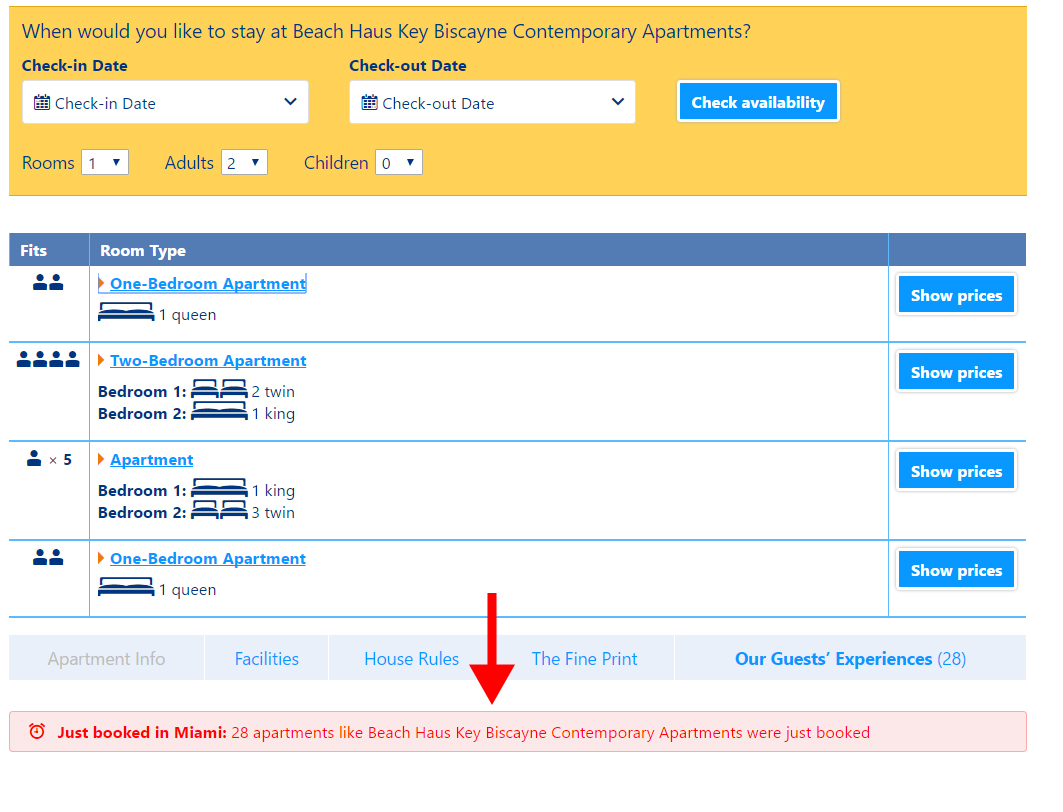 6. Use Colour Psychology
6. Use Colour Psychology
While we’re on the subject of using human behavioral psychology to help marketers sell better, consider also the principals of colour psychology. There’s a lot to be said about how colour influences the way we perceive things from the taste of food, to scent, to how something might feel and more. Colour influences the way we feel. For example, blue is often regarded as a calming colour of confidence and competence. Red is often seen as an aggressive colour, or the colour of sexual passion. Of course, culture, gender and individual lived-experiences will also inform how different colours affect you.
Brands, nonetheless, know the significance of colour psychology.
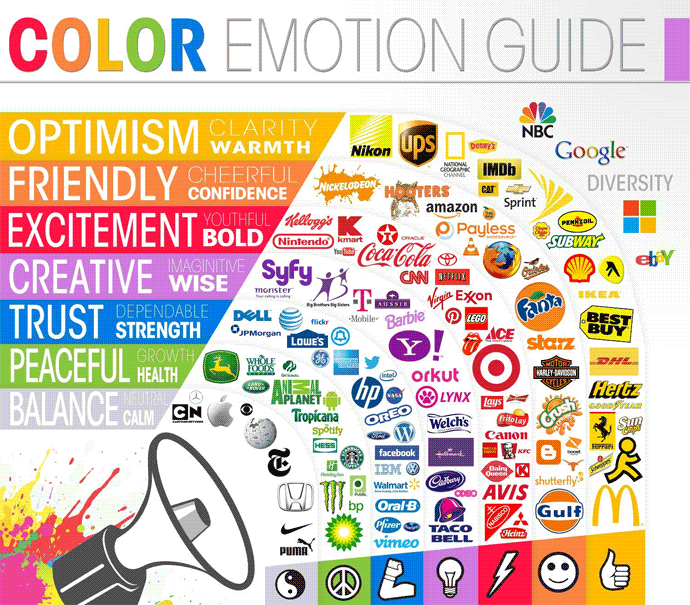
When building out your newsletters and most especially your CTA buttons, keep colour psychology in mind. Testing will be required here, depending on your brand and each of your offers to determine which CTA button colours will work best. But as a best practice for creating urgency, red is a great choice as it implies pressure, criticality, and excitement.
7. Loss Aversion
This was mentioned in passing previously, but psychologists really do agree that it’s particularly painful to lose something. Letting go of something, even if you don’t get any use out of it anymore, can be a painful process. The human tendency towards the ‘pain of losing’ therefore makes Loss Aversion a great marketing tactic to drive conversions.
The though of an offer being the last chance, or the opportunity being taken away is enough to create urgency and get visitors to buy now.
Can you overuse Scarcity and Urgency tactics?
Yes. If you always have a sale, or it’s always the ‘Last Chance’ to get in on a good offer then it’s not really a good offer. In fact, overusing scarcity tactics can cause people to lose trust in your business and even devalue your brand. Scarcity and urgency, after all, invents Perceived Value and the second that valuation drops, the tactic doesn’t work. If you announce you have a store closing sale every few months and then never close, then you’re doing it wrong.
So always keep your scarcity and urgency tactics legit. Put these tips into practice and start converting more visitors, now!
http://gph.is/19DCgZA
Want to learn more? Connect with our team at sales@clearpier.com
Lead Generation: 5 Simple Steps to a Smarter Strategy
These are the best practices for a fail-safe lead generation strategy.
So, you want to learn how to build a lead capturing machine and grow your business. Where do you start? How do you get your landing pages to perform?

What are the best practices for a fail-safe lead generation strategy? Keep reading and learn how to give your marketing strategy a boost now.
1. Define Your Goals and Target Audience
What’s the first step in creating a smart inbound marketing methodology that captures not just leads, but marketing qualified leads? Defining your goals and identifying your target audience!
This is where most savvy Digital Marketers will begin any given campaign. If you haven’t already, start by producing some strong Buyers Personas that depict your ideal customer, in detail. Give them a story. Fill in their needs and their challenges – but don’t just hypothesize. Do some research by interviewing your current client base and speaking to your sales team who are on the front lines with clients. By filling out your Buyers Personas, you’ll be able to see the many different target audiences your business may have.
If you’ve already got your Buyer Personas pinned down, move to the next step: defining your campaign goals. Every campaign, needs a specific, relevant, and measurable goals. Depending on your business needs and your target audience, you campaign goals will vary campaign to campaign.
Not the ‘target’ I had in mind. But if you have your target audience and goals set, then hats off to you.
For example, your target audience may be an existing customer list – visitors who have previously bought from you but have been inactive for sometime. In this instance, your goal is to re-engage this audience and get them to buy again. You may therefore promote a new and exciting offer.
In other instances, your goal is to drive more traffic to your site and bring on prospective clients. In this case, you’ll combine a brand awareness campaign, along side compelling content that adds value to your prospective clients’ lives, and support all of this with retargeting.
2. Engage Audiences with Captivating Content (Videos, Webinars, Guides)
You know what I hate now a days? When I get to the front of the check out line at the mall and before the cashier even starts to ring up my purchase, she asks for my email.
Not in a delightful, ‘Hey, can I have your email because I’ve got a great incentive for you that will be instantly sent to your email now which you will benefit greatly from,’ kind of way. But rather, just a ‘hand over your personal contact information now @#*~%!’ sort of way. Sometimes I feel like I’m being held up at the check out.
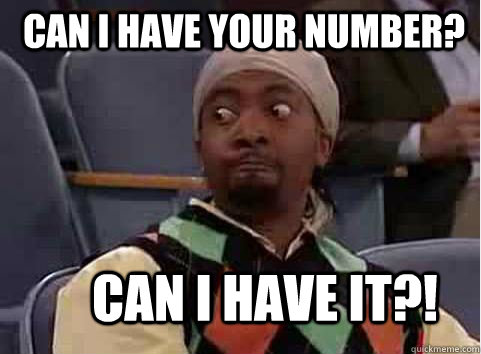
Not in a delightful, ‘Hey, can I have your email because I’ve got a great incentive for you that will be sent to your email now which you will benefit from greatly instantly’ kind of way. But rather, just a ‘hand over your personal contact information now, @#*~%!’ sort of way. Sometimes I feel like I’m being held up at the check out.
Why should I give up my deeply personal contact information if I don’t know a) what your offer is and b) what’s in it for me?
Digital Marketers should be asking the same thing when building out their lead generation strategy. What’s in it for your customers?
Beyond the offer that you’re providing to customers, getting visitors to fork over their personal information and become your lead requires that you provide them with something that will add value to their lives. These incentives can come in the form of educational content like eBooks and guides, digital courses and webinars, or resources like templates, checklists, and presentations, or even in the form of free gift giveaways.
Create compelling content that is worth your audience’s wild, and they’ll be give you their numbah (and email) from left and right.
3. Abide By Form Rules
What should your landing page forms look like? How many fields are too many, too few? Is there even an ideal number?
Just remember this: the number of fields your form uses depends on your offer. The further down the sales funnel your offer, the more details and therefore fields you may require from your leads.
For something as simple as a presentation or use of a free tool, you may only ask for emails. For product demos and webinars, however, you would definitely ask for more information:
- Full Name
- Phone Number
- Title
- Company
The only way to really know, however, is to test, test, test!
4. Use Personalized Testimonials to Build Trust
Adding testimonials to any landing page is going to add credibility to your offer. Word of mouth is perhaps one of the strongest way to persuade someone who is on the fence to buy.
In fact, customer testimonials and reviews have the highest effectiveness rating (89%) for influencing buyers.
Testimonials go further, however, when you add a face to the words and are personalized. Including photos with your testimonials or case studies verifies the human aspect of the testimonial, and asserts it’s honesty.
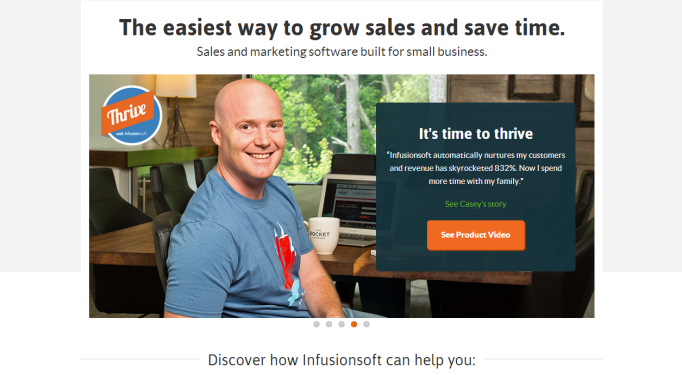
According to MarketingLand, surveys reveal that 71% of marketers see their ROI increase with video ads. That said, it’s worth testing the use of video testimonials to drive leads.

5. Consistently Use an Actionable CTA
Using a strong, actionable CTA consistently for your campaign may be the difference between that final click after the visitor fills out that lead form or just clicking away.
CTA writing best practice is to be specific and describe precisely what will happen once visitors click on the button. Match your message and your action.
Here is an example of a great actionable CTA from Netflix:
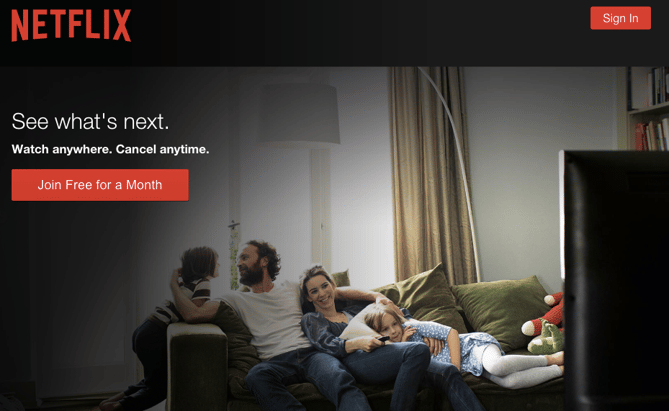
Why is this great?
- Copy is concise
- CTA is specific
- You know exactly what you get when you click
- Clean simple design focuses visitor’s eyes on CTA
- Copy colour and button background colour stand out
Here is a poor CTA example:
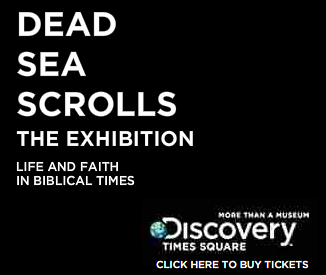
Why does this suck?
- Unclear title makes it unclear what this offer is for
- Where is the CTA button? OH it’s located on the bottom right in font that blends in – viewers can’t even find it!
- If your visitors can’t find your button, they’ll quickly get frustrated and click away – don’t frustrate your viewers!
Keep your CTA relevant, specific, and clear and just watch your leads grow.
And REMEMBER, regardless of the best practice advice you’re receiving out there, there is no better way to get the definitive answer on the right lead generation strategy for your business leads if you don’t test. Test, test, and test! Now go and generate some leads.
http://gph.is/1hAWPrm
Want to learn more? Connect with our team at sales@clearpier.com
The Ultimate ABCs of Programmatic Advertising: T to Z
In this series, we set out to help you get fluent with the Programmatic language.
*This is part 5 and the final installment of a series, The Ultimate ABCs of Programmatic Advertising. See all other parts of this series: part 1, part 2, part 3, and part 4.
We launched this series as an aid for every digital marketer out there who has ever been confused, annoyed, or even a bit frustrated with all the programmatic advertising jargon out there.
In this series, “The ABCs of Programmatic Advertising,” we set out to help you get fluent with all the specific terms and acronyms.
Today, we breakdown everything from T to Z.
Targeting, Behavioural vs. Contextual
Without contextual or behavioural targeting, your ads be like…
There are two main ways to target your customers: with behavioural and contextual targeting. Behavioural targeting is based on looking at a user’s
historical data web browsing data to predict where users will be in the future, and what they’ll click on to serve the most relevant ads to them. This is where First-Party data, especially data collected by publishers, is therefore an important factor in accurate behavioural targeting.
Contextual targeting is based on identifying and understanding the content that frames an ad placement to serve the most contextually relevant ads. This is done largely by scraping keywords and allows advertisers to, for example, run ads for a new car offer on a web page featuring an automotive article.
Unique User (UU)
Do I have to define this? This is pretty straight forward. A Unique User is pretty much what the term implies: the measurement of an individual web visitor and their behaviour. Unless you’re using a single sign-on (like Facebook), one person can have multiple unique user footprints if they use more than one device. UU is the basis of how web traffic is measured.
Viewability

Viewability is a digital marketing metric that is quickly becoming a standard in the industry. It refers to the tracking of impressions that are actually seen by users, not just impressions that are served. For example, if an ad placement is lower on a site, but a user doesn’t scroll all the way to the bottom of the page and therefore doesn’t see the ad, then that is not a viewable ad placement. The IAB has set out regulations that dictate a minimum of 50% of the ad has to be displayed on screen for at least one second to be considered viewed.
Win Rate
The ratio of bids in an auction to those that are won. According to Digiday, Win Rate is used as a metric in the programmatic world for technological efficiency.
Yield Management
You may have heard of the term yield management in the context of digital marketing before. What does it mean? Yield management is a challenge mainly for publishers. Demand for any given website’s inventory fluctuates and does not necessarily consistently fill 100% at the best rate. Yield management has the aim of filling as much inventory as possible at the highest rate to maximize the publisher’s ROI. Yield management officers determine which buyers publishers should partner with, how much inventory they should get, and which buying channels are work best. It’s not an easy job: for digital yield management strategists, we’re talking about striking the right balance between programmatic sales, direct, and indirect sales.
If you didn’t know, now you know!
Keep following ClearPier’s blog for everything you need to know on Programmatic and Digital Advertising. Remember to sign up for our monthly newsletter, and don’t forget to follow us on social media!
Want to learn more? Connect with our team at sales@clearpier.com
How to Most Effectively Retarget Your Customers
Customers subjected to retargeted ads are 70% more likely to convert.
Did you know that customers subjected to retargeting are 70% more likely to complete a conversion compared to non-retargeted visitors.
CTRs for retargeted ads are also significantly higher than regular display (sometimes 10x higher). Those are some impressive stats.
So the question goes: are you retargeting your visitors properly? And I don’t mean, have you got it turned on. I’m saying are you segmenting correctly? Is your frequency cap game on point?
Yes, no, maybe? Say no more! Read on for some great tips on how to most effectively retarget your customers now.
1. Segment everything – literally, everything
Audience segmentation or grouping your visitors based on behaviour is incredibly important for targeting purposes. User behaviour on each of the pages on your site are indicative of the different levels your visitor is at in the buyer journey, and of how of how ready they are to convert.
With this information in tow, you can then create more optimal ad experiences by highlighting the products or services these specific groups previously viewed and directing them back to pages they visited.
For example: Let’s say a visitor viewed both your pricing page and your case studies page, but then wandered off without taking any next steps. While it’s safe to assume they had some interest, you may want to segment them and serve up an ad for your consultation page to catch their interest and re-engage them.
2. Leverage Frequency Caps
When you clicked away, but you're being retargeted with the same ad 50 times a day...
Don’t you hate it when you’ve recently been on a site and then afterwards, no matter where you go on the interwebs, that website follows you around in the form of retargeted ads a million times a day?
Everywhere you turn, at least ten times in an hour, there’s that same exact ad heckling you to buy that one thing you looked at days ago.
Even if a buyer had been interested in the original offer, overexposure can turn a potential convert completely off.
Leverage frequency caps to limit the number of times an ad will be shown to a single visitor so potential buyers don’t tire of your reminder.
Retargeter recommends showing 17-20 ads per month, while ClearPier’s Ad Ops team suggests capping frequency at 3-6 ads/day, particularly if it’s a branded campaign. Terry Kalambalikis, Demand Optimization Manager at ClearPier, reminds us however that this really depends on the type of offer and the needs of the client as well. Different from display, video frequency cap may be set at 1 ad/day, but the smaller cap is also simply the result of fewer avails. Any higher of a frequency cap would affect your pacing.
3. Feel the Burn… Burn Pixel
What might be worst that retargeting without frequency capping? Retargeting the same ad, with an irrelevant message, to a user that has already made a purchase. Your customers are furrowing their eyebrows and asking, “Why are you still trying to sell me this, I’ve already purchased it!”
Your customers RN 'cause, bad retargeting...
Don’t annoy your client base. You want to keep them coming.
To avoid this, use a burn pixel.
Burn pixels is a short line of code that runs on the post-conversion page, usually the ‘thank you page’, will remove users that have already completed a transaction. You can push these users into a different bucket of converted buyers now and serve new ads with more relevant messaging.
The burn code saves you money by helping you reallocate spend. With your audience properly tagged now as an existing customer, rather than a prospective buyer, you can retarget with a new set of ads to upsell, cross-sell or offer new promotions. Previous customers are much more likely to be repeat buyers if you run your retargeting campaigns properly.
So make them feel the burn…pixel!
4. Play with Durations
The duration of your campaign dictates precisely how long your visitor will be retargeted based on their original cookie data. Their retargeting duration can be anything from a day, a week, to a month or longer.
Frequency caps function to limit the number of impressions your visitor will be served throughout your campaign duration. This duration dictates the lifespan of your visitor’s cookie data and at the end of your campaign duration, that cookie is destroyed.
In other words, at the end of your campaign duration, visitors will no longer see your retargeted ads.
Typically longer campaigns run between 30 and 90 days. But beware: even if you have a frequency cap and have set your campaign duration alongside a burn pixel, you NEED to refresh your creatives. Which leads me to my next point…
5. Refresh Your Creatives
Why you ask? People get bored.
YAWN!
This is the biggest risk that can turn off potential buyers that have already indicated that they’re interested in your product or services.
But stale ads are a real problem. What may have appealed to your audience a month ago, may not work a month later.
In fact, Facebook has a subtle way of encouraging advertisers to refresh their ads by slowing down the pacing of an older ad. So, if you want your ads seen and more traffic pushed through, refresh your ads.
6. A/B Test Your Creatives
In addition to refreshing your ads, you should also be A/B testing your creatives to determine which ad is the best performing and eliminate those that don’t.
Testing your creatives will help to uncover which variable of your creative works best. Sometimes all it takes to boost clicks is a button colour change. At others, it’s the image that makes people convert.
If you’re not sure where to start you’re A/B testing, check out our article on A/B Testing 101.
No go forth and start retargeting your audience with confidence!
Want to learn more? Connect with our team at sales@clearpier.com
The Ultimate ABCs of Programmatic Advertising: L to S
In this series, we set out to help you get fluent with the Programmatic language.
*This is part 4 of a series, The Ultimate ABCs of Programmatic Advertising. Last week, we published part 3 of this series. For part 1, click here, and for part 2 click here.
We recently launched this series as an aid for every digital marketer out there who has ever been confused, annoyed, or even a bit frustrated with all the programmatic advertising jargon out there.
In this series, “The ABCs of Programmatic Advertising,” we set out to help you get fluent with all the specific terms and acronyms.
Today, we explore
everything Programmatic
from letters L to S.
Lead
After a visitor completes an action on your page, usually a sign-up/opt-in, or download, or contact form, which suggests their interest in your offer by way of providing your business with their information. A lead is therefore a “potential sales contact.”
Monthly Active User
A metric for the average number of users who are active on a website or in-app per month.
Native Advertising
Originally, native advertising stemmed from the print tradition of advertorials. Native ads in the form of Custom Content refers to digital publications, usually articles, which resemble the look and feel of the publication’s editorial content but is sponsored by the advertiser and intended to promote their product or service. The idea is to provide an organic experience for audiences that is non-invasive.
Native ads also come in the form of In-feed Native ads which can now be served programmatically. In-feed native ads includes promoted listings and paid ads. As In-Feed Native has now evolved programmatically, advertisers are now able to include in a placement elements of an editorial like a headline, images, and video which are automatically customized and arranged to look like an editorial based on contextual content.
Negative Retargeting
Negative Retargeting refers to a process where marketers can prevent an ad from being show to a user to that has already completed a specific action so as to prevent unnecessary overspending. For example, a user that you had been targeting completed the desired action of making a purchase.
Negative retargeting in this case would mean limiting any retargeting ads to users that have made a purchase. For such users, ad dollars would be better spent by running new promotions they have not yet seen or suggesting new products that compliments their recent purchase to ensure all audiences receive only the most relevant ad at any given time in the sales funnel. See also “Retargeting” and “Frequency Capping”.
Omnichannel
Similar to multi-channel marketing, which markets across several different channels, omnichannel is also a cross channel marketing model – with one important difference: customer experience.
While multi-channel considers each marketing channel as separate silos with independent touchpoints that all work together towards a single goal, omnichannel focuses on the customer’s experience of receiving media communication through all potential channels in a unified, seamless, and holistic manner.
The best way to imagine omnichannel is from a birds eye view. “Omni” is Latin for “every/all” and also the root word for ‘omniscient’. Multichannel is more like being on the ground and surveying the landscape across the entire expanse of the horizon.
Omnichannel is all encompassing, includes online and offline, all devices, OOH, digital, and telecommunications as well.
Open Exchange
Sometimes referred to as “Open Auction”, an open exchange is where ad auctions open publicly take place. Unlike Private Exchanges, they do not require closed invitations and anyone can buy inventory.
Page View
The number of a web page is requested from an ad server and displayed to a viewer.
Price Floor
The lowest CPM price a publisher is willing to sell their impressions for programmatically.
Private Marketplace (PMP)
A Private Marketplace or PMP is a closed media buying and selling environment that enables publishers to control the demand partners that they work. PMPs function on an invite-only basis, they also allow advertisers to customize deals to fit their needs by pre-setting targeting parameters, floor rates, and content, and more. Buyers are also given the opportunity of first-hand access on premium inventory that isn’t available in public exchanges. ClearPier is a Private Marketplace offering premium inventory.
Private Auction
A private auction is similar to an Open Exchange but as the name suggests, is private and only select buyers are permitted to bid against a pre-agreed minimum floor price. The difference between Private Auction and PMPs is singularity versus plurality – PMPs generally have a network of publishers and private auctions can happen in one-offs.
Programmatic Ad Buying
Programmatic Ad Buying or Media Buying is an umbrella term that refers to the use of data (behavioural, contextual) and software to buy or sell ad inventory in-real-time to serve ads efficiently and instantaneously, rather than through an RFP (Request for Proposal) and manual IOs (Insertion Orders).
Programmatic is really just using technology to serve ads and while this seems to be a given for digital media, the same cannot be said for OOH or TV yet. Times are changing, however, and vendors are attempting to apply programmatic technology to other marketing streams.
Watch this video for a primer on Programmatic and RTB.
Premium Programmatic
Historically – and this is why originally programmatic advertising received a not-so-great reputation among big brand advertisers – programmatic buying/selling was reserved for lower quality, remnant (unsold) inventory.
Programmatic today no longer necessitates remnant inventory, particularly if purchased on a premium programmatic basis. Over time, buyers and sellers have really benefited from the scale and efficiency of buying programmatic and now also offer “higher quality” or “premium” placements, which demand higher sale prices, programmatically as well.
Programmatic Buy, Guaranteed
Inventory bought programmatically rather than through manual RFPs and IOs, that nonetheless have specified flight times and for specific placements, conducted directly with a publisher. Guaranteed programmatic buys do not necessarily follow the normative auction model.
Programmatic Buy, Non-Guaranteed
On the other hand, Programmatic Guaranteed Buys often refers to the sale of remnant inventory, through a third party, usually ad networks and ad exchanges, rather than directly with the publisher.
Reach
The total number of different people that have been exposed to an ad or piece of content, at least once, over a specific period of time. Reach also refers to how far wide an awareness or branding campaign impacts consumers.
Real-Time Bidding
Real-time bidding refers to the buying and selling of ad inventory on a per-impression basis through live-time auctions that take place in the hundredths of milliseconds that it takes before a webpage loads. It’s likened to the stock market and how auctions work on Wall Street. Real-time bidding is facilitated by ad exchanges and SSPs (supply side platforms).
Remnant Inventory
Remnant inventory refers to ad supply from publishers that have not been sold. Remnant inventory is often seen as lower quality ad placements, requiring more and deeper clicks into a publisher’s website. Remnant inventory is generally sold at a discounted rate and historically have been packaged and sold wholesale to ad networks.
Retargeting
Even if you haven’t looked up the definition of “Retargeting” just by being a participant of the interwebs, you’ve somehow experienced and understand that retargeting are the ads that follow you around the web after you’ve visited a site or completed a certain action.
Retargeting advertising is cookie based ads that target viewers based on your previous browser based internet activities and behaviour. Retargeting is an attempt to drive users back into the purchasing tunnel to complete a specific action like a purchase or sign up.
Rich Media
Rich Media ads or content refers to creatives that have an interactive element which is an added advantage over basic text or display ads, encouraging more engagement from viewers. For example, units like full page overlays, peel downs, expandables, or pops are all rich media formats.
Supply Side Platform
Just as on the buy side, the SSP or supply side platform is the equivalent technology on the seller side of programmatic buying that facilitates the sale of publisher ad inventory. The purpose of SSPs is to ensure efficient selling and maximize revenue.
If you didn’t know, now you know.
Stay tuned for more in our next and final post in this series where we take a look at the T’s to Z’s of Programmatic.
Want to learn more? Connect with our team at sales@clearpier.com
[Infographic] The Complete Social Media, Display and Video Ad Size Cheat Sheet
Bookmark this infographic to help streamline your ad creation process across display, social, and video.
Most marketers will agree with me that one of the most important things you can do for you and your team is to maximize efficiency. For those of us in digital marketing, you know that there is an abundance of various types of ads, ad sizes, dimensions, and formats that creatives come in. The challenge comes when the recommended design specs for ad images changes.
So how on earth can you streamline your work, if the specs keep changing?
In an effort to help make your life (and my life) easier, we’ve created this ad size and dimensions cheat sheet that highlights the main display banner ad formats, video ad formats, Facebook ad formats, as well as those for YouTube, LinkedIn and Twitter. Keep referring back to this cheat sheet as we will update it consistently whenever a new ad size update is announced.

Want to learn more? Connect with our team at sales@clearpier.com
How to Build Perfect Mobile Landing Pages
If you aren’t using mobile friendly landing pages, you’re losing out on conversions and you’re wasting money. Here’s how to fix that.
Let’s get this straight: mobile landing pages and desktop landing pages are not and should not be the made same. If you aren’t using mobile friendly landing pages, you’re losing out on conversions and you’re wasting money.
You know, we know, everyone knows by now that you have to be on mobile because its a key platform that facilitates numerous touch points along the buyer journey. Google’s data tells us that mobile is the likeliest starting place for online activities, whether it be researching a product through reviews or comparing prices, that can ultimately culminate in a sale down the line. In the past, in the case that research that started on mobile ended in a conversion, that conversion would most commonly occur on desktop.
That’s not the case any more. The growth of mobile commerce is outpacing traditional e-commerce according to ComScore reports. A third of all online sales come from mobile devices now.

So for the sake of winning more conversions, getting more sales, and just plain making more money on mobile, this article breaks down exactly how to build the perfect mobile landing page.
1. Design with Speed in Mind

Mobile users demand instant and easy to digest information that cuts to the chase. They are fast and furious – any latency or slow load times make them agitated and immediately turns them off. Building landing pages for mobile users demands attention to user experience. That means quick load times, short forms, and catchy copy. Make sure you’re optimizing so that you have no slow-loading content.
In same cases, getting rid of images all together in favour of concise copy might work better. Page load times factor into strong user experience which contributes to higher conversion rates overall. Search engines also factor load times into their ranking process as well so keep in mind that slower mobile loading times can throw off your search results and ultimately effect your bottom line.
2. Keep Your Copy Short and Sweet Without Losing Clarity
Keeping your headlines concise is just general good practice. But on mobile, its even more important because of how easily distracted users are. Remember, mobile users are always multitasking and so their attention is already often divided. Don’t distract them further. Worst yet, don’t annoy them by making them have to read so much.
You know this first hand through your own mobile user behaviour. How often do you really read a full article through from A to Z? How often do you just briefly scan a page for the bare minimum info? Why do you think point form listicles are a thing now? Because we live in an age of short attention spans.
Thus, for mobile landing pages headlines should be as short and succinct as possible while all other copy should be minimized. The best way to practice writing clear and concise copy is by writing then editing, over and over and over again until you have the bare minimum that works.
3. Use Strong and Immediate CTAs or Click to Call
Keeping CTAs above-the-fold on mobile landing pages don’t always work, simple due to the variety of screen sizes out there. So the above-the-fold rule doesn’t necessarily always apply. That being said, you should still make sure your CTA is clearly visible and easily clickable by a user’s fingers (and also that it works).
Make sure you’re also optimize for smaller screen sizes. That means making your buttons fairly large. If click-to-call is applicable to your business, swap out your normal CTA for a clickable phone number instead.
Look at the difference between this desktop landing page:
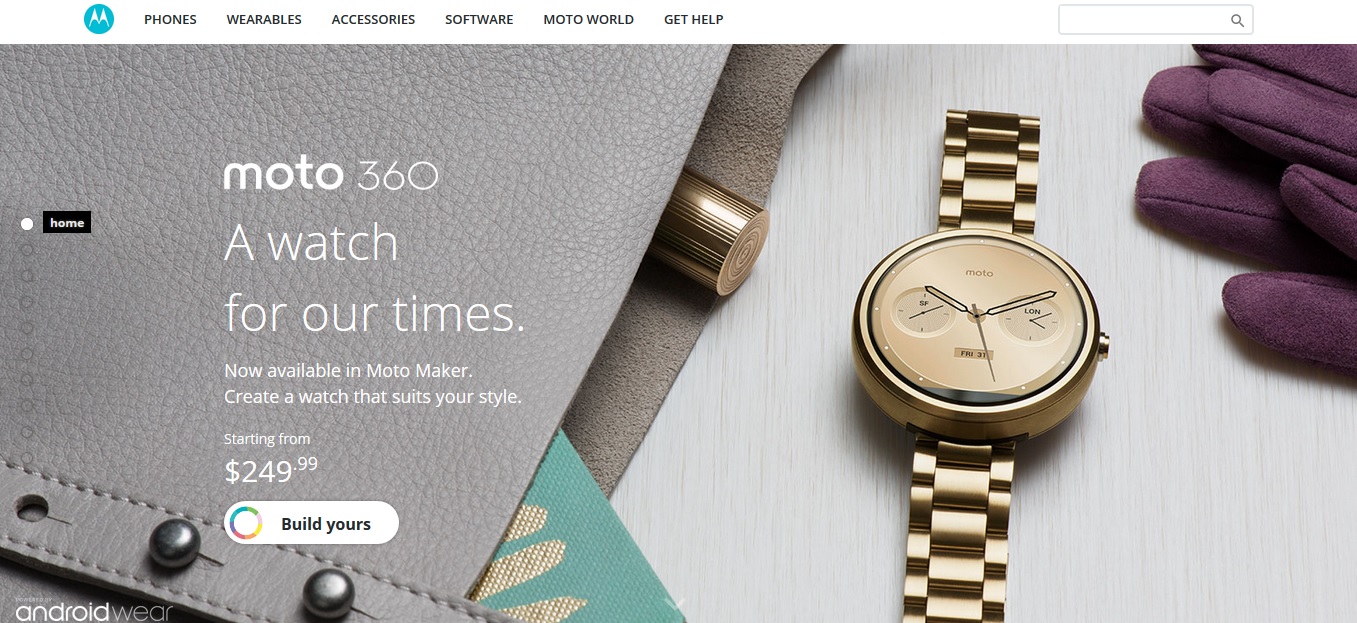
Here is the mobile version:
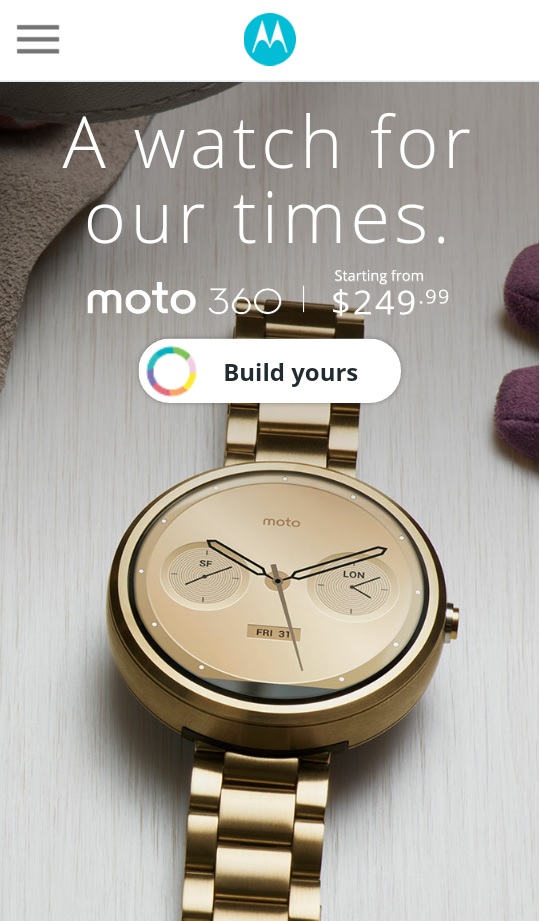
4. Keep Forms Short and Reduce Optional Fields as Much as Possible
We’ve mentioned already that mobile users are really distracted and easily agitated. So unlike on desktop where visitors may be willing to fill out long forms and provide additional information, mobile users are immediately turned off by too many forms.
The reasoning? Screen size. Forms are hard to fill out on small mobile screens what with our giant thumbs and these tiny little fields. Nobody has time for that! Even dropdown menus can be problematic on mobile as well. How often have you been frustrated by dropdown menus and millions of fields on a mobile landing page and just went “Urgh, forget this”? So then you know what I’m saying!
Our advice? Avoid them if you can so that you reduce the likelihood of visitor resistance.
Here’s an excellent reduction of form fields from desktop to mobile:

5. Avoid the One-Size-Fits-All Mentality
Don’t you just hate when you land on a mobile page and you have to pinch the screen to zoom in to see what the message is? Or an image loads and its so big, it doesn’t even fit on the page and then you get distracted about why you even came to the page… and before you know it, you’re out of there.
For the love of conversion, don’t treat your mobile landing pages like desktop. Make sure your designs are either a) responsive or b) adaptive.
A responsive landing page automatically resizes to fit any screen size. With responsive, no matter the device your audience is using they should be able to see your landing page seamlessly across screens which is a good thing because there are multiple user touch points in the buyer process on numerous devices. It’s important the responsive designs for landing pages are used to maintain strong user experience and drive conversion.
Here is an example of responsive landing pages from Skinny Ties.

Adaptive landing pages on the other hand are a little different in that the content of the landing page conforms or “adapts” to the screen size by displaying only the most relevant and important components. Adaptive landing pages are like the nutshell version of a desktop landing page or website.
Here is an example of an adaptive landing page:

Key Takeways
- Optimize your landing pages for fast load times
- Keep copy short and sweet (without sacrificing clarity)
- Use strong CTAs or Click-to-Calls
- Keep your forms short and minimize distractions
- One-size does not fit all landing pages
Keep these key takeaways in mind when you set out to start your next campaign. Build better landing pages and watch your conversions grow.
Want to learn more? Connect with our team at sales@clearpier.com
The Header Bidding Trends That Will Impact Publishers Most
For publishers, Header Bidding is a cost effective and advantageous opportunity to maximize their revenue. Buyers and sellers can expect to see more developments.
Since last year Header Bidding has been a hot topic of conversation among digital marketers and publishers worldwide.
For publishers, Header Bidding is a cost effective and advantageous opportunity for publishers to maximize their revenue simply by making the programmatic buying process more efficient. If you’re not sure how Header Bidding works, read our article which explains how it works.
Or watch this video:
But the question we’re asking today is what the biggest trends in header bidding will be next? Expect to see these trends in Header Bidding unfold this year:
1. Video Header Bidding
Considering the explosive demand for video content among audiences, it’s no wonder publishers would look for ways to streamline and scale up their video revenue stream. Video Header Bidding is a natural next step for publishers looking to capitalize on video and maximize yield.
Many argue that video advertising still requires a great deal of cleaning up and organisation due to the fragmented nature of the new frontier. Video Header Bidding may be a part of this solution. Video Header Bidding no doubt increases competition, but it functions differently from regular display.
Technically, there is no “header” code in a video player. Video players functions as a mediating technology between the website and demand side platforms. But there is significant potential for Video Header Bidding to help add efficiency and transparency into the confusing video landscape, while putting more control back into the hands of publishers as far as partner selection goes.
However, not everyone agrees that Video Header Bidding will work and even argue that the solution can lead to data leakage. More on the other side of the argument, here.
2. Header Bidding Partner Optimization
As we know by now, many vendors are jumping on the Header Bidding band wagon. And while more competition often means more options are made available to publishers, it also means that the landscape becomes more fragmented. its important for publishers to understand and choose the right partners.
That means asking the right questions. Are the partners providing more or less value to your stack? Will your partner be willing to take on the challenge of integration, and if there are technical on-boarding issues is there a client services team who can service you on demand? Optimizing header bidding partners and separating the winners from the losers will no doubt be on the agenda for publishers the world over and publishers will need to do their due diligence.
3. Server to Server Integration
Header Bidding is going to evolve, this is a given with any technology. The next natural development for Header Bidding is going to be in the form of server-to-server connections. Digiday gives a really great definition of what server-to-server connections are here.
In a nutshell, server-to-server allows for the bidding process to happen on partner ad servers rather than on the publisher’s browser. The result? Publishers can pass along the heavy lifting to a third party. There are benefits like reducing latency and page load times, increase efficiency and allow for more partners to plug in.
Want to learn more? Connect with our team at sales@clearpier.com
The Ultimate ABCs of Programmatic Advertising: D to K
In this series, we set out to help you get fluent with the Programmatic language.
*This is part 3 of a series, The Ultimate ABCs of Programmatic Advertising. For part 1, click here. For Part 2, click here.
We recently launched this series as an aid for every digital marketer out there who has ever been confused, annoyed, or even a bit frustrated with all the programmatic advertising jargon out there.
In this series, “The ABCs of Programmatic Advertising,” we set out to help you get fluent with all the specific terms and acronyms.
Today, we breakdown everything from D to K.
Daily Active Users (DAU)
The average number of users who are active on a website or mobile app over 24 hours. DAU is a measurement of the “stickiness” of a site or app by showcasing precisely how many unique and active users visit on a daily basis. The main requirement for a user to be considered “active” is that they open to view or engage with a website (or web product) or app in any way.
Data, First Party
First Party Data is widely defined as data owned by the party that initially collected the data. For businesses, this includes information you directly collect about your customers through your CRM, and through surveys and feedback.
In the digital landscape, advertisers and publishers can also collect first party data about the behaviour and actions of audiences that visit their site. This information can be used by publishers to better sell their inventory to advertisers who want to leverage more precise targeting data. First party data is seen as the most accurate and reliable.
Data, Second Party
Second party data is data that is collected by an entity but is then sold from the source, usually through a DMP, to advertisers to improve their audience targeting.
Data, Third Party
Third party data is aggregated collected and owned cookie data from other sources. Third party data is usually provided by a vendor and sold to advertisers who need to reach a broad audience. There is an abundance of third party data, but it is not always seen as accurate.
Data Management Platform (DMP)
A DMP is a technology platform that warehouses and helps manage data. Advertisers often work with DMPs to manage cookie IDs and create specific audience segments for improved ad targeting. DMPs play an important role in the programmatic landscape by facilitating data driven advertising by way of layering audience data over media buys.
Deal ID
In the context of private marketplaces, a Deal ID is the unique number assigned to a buyer and used to identify and match their automated buys with sellers and their inventory, based on a number of trading variables negotiated beforehand. Variables negotiated can include a minimum price for bids, types of ad units available and specific placement location on the site. Deal IDs allow for rules to be set up across buyers working with a seller who then has control over preferential deals for advertisers willing to pay premium prices. Deal IDs also have the added function of helping to keep publishers from having to disclose their inventory in the public marketplace which would effect their direct sales.
Demand Side Platform (DSP)
The technology that helps facilitate programmatic media buys for buyers, most likely marketers, advertisers and agencies. DSPs can be used to manage the purchasing of display, video, mobile, in-app, and search ads by plugging into numerous exchanges. Why use a DSP? The technology makes media buying efficient by allowing a central location for advertisers to buy media across a large volume of publishers, while keeping costs low.
Display
Display advertising is a type of online advertising that comes in several forms, including banner ads, rich media and more. Unlike text-based ads, display advertising relies on elements such as images, audio and video to communicate an advertising message. The IAB provides a standardized guideline for all display ad sizes and formats, now updated for HTML5, found here.
Effective CPA (eCPA)
A measurement of the actual costs spent to generate a specific action – it is used to measure the, well, effectiveness of a campaign. If the advertiser is purchasing inventory with a CPA target, instead of paying per action at a fixed rate, the goal of the effective CPA (eCPA) should always be below the maximum CPA. This fundamental view of what the performance of conversion-based campaign should be is served as the baseline for many buy-side platform optimization algorithms.
Event
A term often used in the customer journey or in-apps, ‘events’ signify the moment a user takes a specific type of action. For example, in-app purchases or app downloads are often labeled an ‘event’.
First-Look
Also known as First-Look Impressions or First-Look Inventory occurs when publishers, marketplaces, and SSPs allow specific advertisers to buy impressions at a set price. The selling process happens in sequences where the impression is shown to the preferred first-look buyer before being shown at any price to other buyers until the first-look buyer declines to purchase the impression.
Frequency
The number of times (how often or frequency) a single visitor is shown an ad over a specified time period, usually 24 hours. Frequency capping is the maximum number the ad can be shown to a single visitor within the time period. For example, a visitor can only be shown an ad a maximum of 4 ads over a 24 hour period. Frequency capping uses cookies to remember the frequency count. Frequency capping is important to avoid ‘banner burnout’ or ‘creative fatigue’.
Geotargeting
The practice of delivering ads or content to a user based on their physical location which is identified by postal (zip) code, IP address, ISP, or GPS data. Geotargeting is important for delivering relevant ads, and is an important innovation for mobile and local advertisers.
HTML5 Ads
HTML5 ads as defined by the IAB “are like mini web pages and require multiple file types to create the ad display and ad features. These files need to be packaged in a way that optimizes load performance and reduces the time it takes to display the ad. However, ad developers may not know how they can produce a visually appealing and interactive ad while making the ad easier to load. In addition HTML5 opens up a diverse set of choices for advertisers and creative designers.”
Impressions
The number of time an ad is shown or served to viewers. It is not a count of the number of unique viewers of the ad impression. A single visitor can be served and see an ad multiple times.
Insertion Order (IO)
This is a term that originates from the early days of advertising when paper was still being used, particularly among agencies. After an RFP (Request for Proposal) is sent out, a proposal by vendors is sent back to the agency. Insertion orders are the final step in the ad buying process that comes from the advertiser or agency that represents their commitment to run a campaign with an outline of spend and flight time. In the programmatic context, insertion orders are sent through ad exchanges.
Key Performance Indicator (KPI)
Key Performance Indicators are metrics that clearly quantify how well or how poorly a campaign meets objectives. In programmatic advertising, KPIs can range from conversions, to CTA, CTR, viewability, to completion rate (for video), and more.
If you didn’t know, now you know.
Stay tuned for more in upcoming posts in this series. Next up, we explore and define the everything programmatic from L to S.
Want to learn more? Connect with our team at sales@clearpier.com




